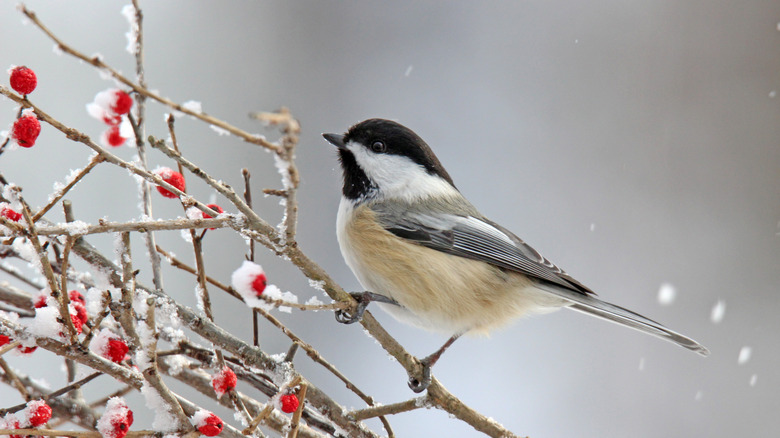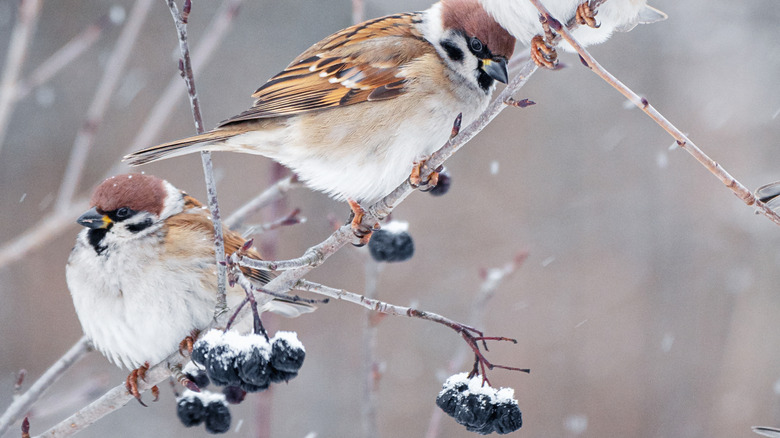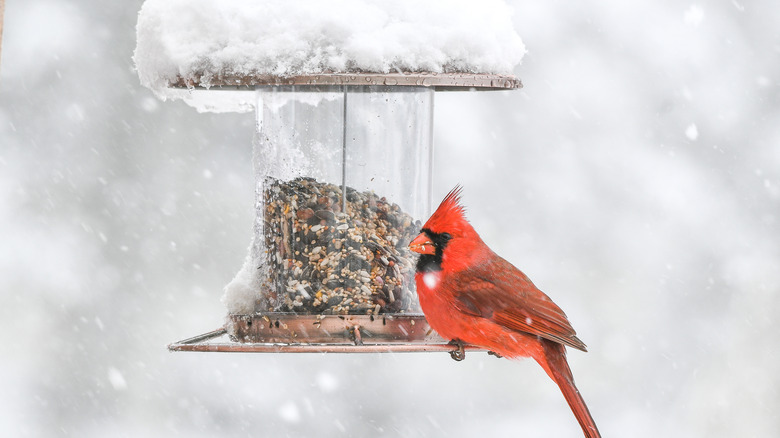Create A Gorgeous Berry Garden That Can Feed Birds All Winter Long
We may receive a commission on purchases made from links.
If the dark, drab days of winter give you the doldrums, consider attracting birds to your yard with a colorful array of winter berries with a gorgeous berry garden. Creating a bird-friendly garden will not only provide you some cheer, but will also bring winter birds some much needed chow. While many species of birds migrate to warmer climates over the winter, several stay put and rely on local sustenance. In North America, these "permanent residents" include certain species of woodpeckers, cardinals, sparrows, starlings, ravens, ducks, chickadees, owls, hawks, and jays.
These birds are able to stay close to home because they know how to forage for food and find safe habitat for shelter in the coldest months. But it isn't always easy for them when their usual food sources have dried up or frozen over. Fortunately, there are steps we can take (and plants we can grow) to keep them safe, secure, and well fed over the winter. When we grow berry shrubs that nourish and shelter them, we can also benefit from the happy chirps, flits, and flutters they supply long after summer has faded.
The berry plants that birds find berry pleasing
To attract as many birds to your yard as possible, try landscaping with bird-friendly plants in your garden or yard. Consider hardy berry-producing trees, shrubs, and bushes that can grow in most U.S. climate zones. These plants have nutritious, colorful berries and a wide variety of birds that are attracted to them.
Elderberry offers deep blue to black berries that are a nutritious food source to birds and the shrubby nature of the bush makes for perfect nesting and hiding spots. If the birds don't get all the berries, elderberries may have health benefits for humans as well. Yellow twig dogwood provides nutritious white berries for birds on bright yellow branches that stand out against drab winter colors. Because it's a multi-stemmed shrub, it spreads out up to 9 feet wide providing excellent bird habitat.
Chokeberry is another great option because its berries become less bitter as the weather gets colder, making them a good late winter food source for birds once others are gone. It produces either bright red or blue berries, depending on the variety. Eastern red cedar is not actually a cedar tree, but a variety of juniper tree. It produces purple-blue berries and the dense foliage of these trees offers great winter protection for birds. Finally, viburnum is a show-stopper bush no matter the season. In the spring, it boasts luscious orbs of flowers, giving way to orange, red, and burgundy foliage in the fall, and then offering dark blue-black berries throughout the winter.
Beyond the berry: other ways to give birds a winter boost
In addition to providing birds with berries for food and branches for shelter, there are other ways to make sure our feathered friends are safely and comfortably getting through the winter months. Bird feeders can provide a much needed nutritional boost while bringing more birds to your yard. A feeder gives birds access to seeds instead of just berries, offering these warm-blooded avians a reliable source of fat and protein. This helps them maintain their metabolic rate to stay warm during cold snaps. But don't just buy any seeds — attract more birds to your feeder by considering which species are specific to your area and researching their diet. Don't fill your feeder with anything that might attract large animals that prey on birds.
Providing birds with fresh water is also helpful to them during the dry months when moisture is scarce or may have a layer of ice on it. You can invest in a heated bird bath or use any type of dish that you refresh regularly when it ices over or gets dirty. If your water source is not heated, place it in the sun to keep the water as warm as possible. The National Wildlife Foundation warns against using glycerin in the water to prevent freezing, as it can harm the birds.
Now that your backyard is friendly for winter birds, you can nourish them year-round. Once the warm temperatures bring foliage back to the trees and bushes, you'll have provided wonderful nesting grounds and all-season nutrition for not just the winter birds, but also returning birds. Now that's a feather in your cap!


